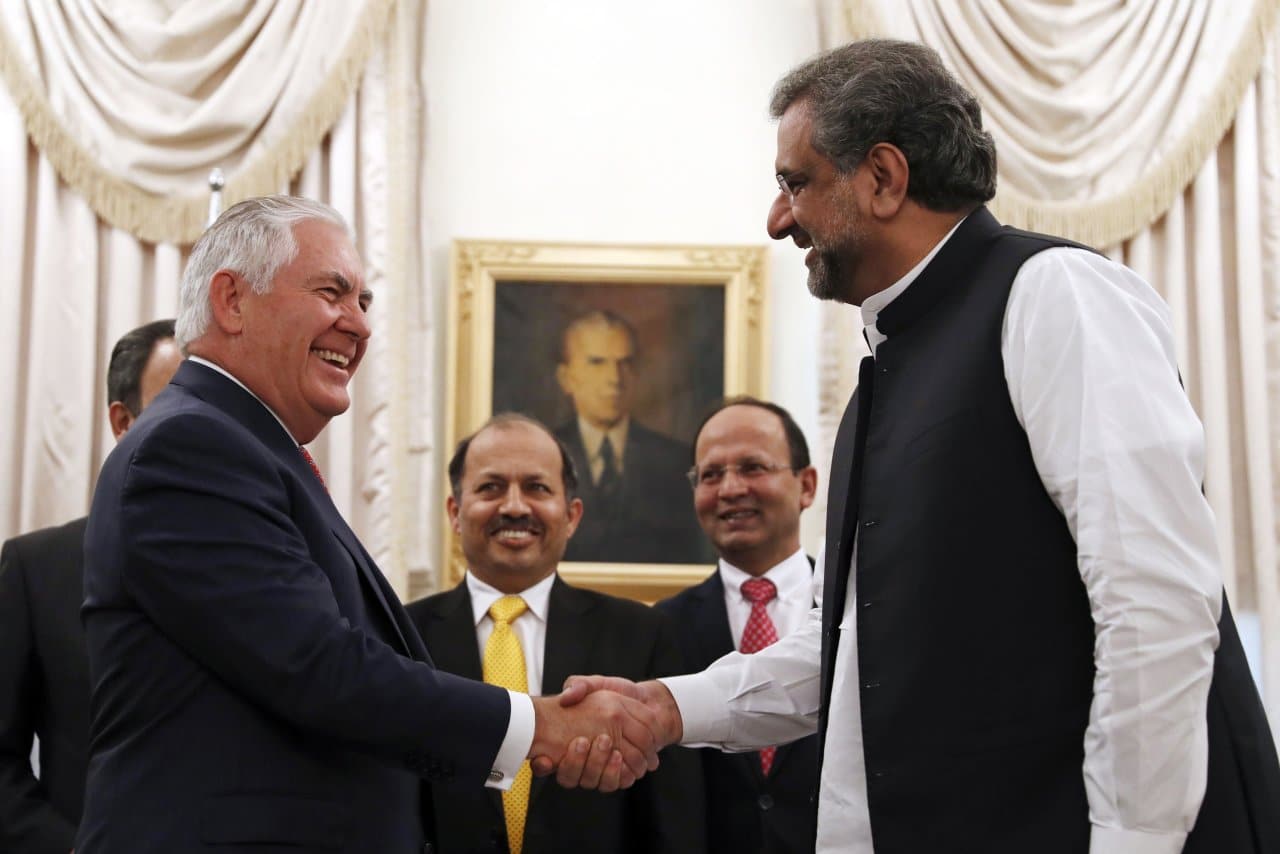Donald Trump started his year by accusing Pakistan of playing a game of deception and lies with the US.
The United States has foolishly given Pakistan more than 33 billion dollars in aid over the last 15 years, and they have given us nothing but lies & deceit, thinking of our leaders as fools. They give safe haven to the terrorists we hunt in Afghanistan, with little help. No more!
— Donald J. Trump (@realDonaldTrump) January 1, 2018
This is merely the latest episode in the deteriorating state of affairs between Pakistan and the US. It is a downward spiral in the relationship accelerated by Trump’s announcement of a new policy on Afghanistan and South Asia. Islamabad was unsettled by the accusation that it was providing safe haven for insurgents, but it was even more alarmed by Trump’s invitation to India to play a larger role in the stability and security of Afghanistan.
Bilateral ties were partially stabilized by the visits of senior US officials to Pakistan and by the rescue of a Canadian-American family from the border area near Afghanistan, with Pakistani forces acting on a US intelligence tip. However, the message in the subsequent trips of Foreign Secretary Rex Tillerson and Defence Secretary James Mattis to Islamabad still revolved around Trump’s demands, hindering a return to normal business.
In a report submitted to Congress, the Pentagon urged Pakistan to fundamentally change its approach to the alleged “terrorist safe havens”. The report said that the US will work with Pakistan using a range of tools to enhance cooperation in areas where common interests converge, but that it will take unilateral action in areas where bilateral interests diverge. Backing up its warning, the Pentagon accused Pakistan of giving sanctuaries and freedom of movement to Afghanistan’s Taliban and to the Haqqani network.
With this policy document clarifying Washington’s position, the debate in Pakistan is revolving around what type of unilateral action the US might pursue and how Pakistani agencies should respond. The spokesperson of the Pakistani military rejected the US stance that the armed forces are not doing enough and warned Washington against taking any unilateral step inside Pakistani territory.
Then Trump intervened with his New Year tweets as the US cancelled part of its security aid to Pakistan. Of the $33 billion mentioned by Trump, more than $14.5 billion is paid under a coalition support fund to reimburse Pakistani costs incurred in support of the US effort in Afghanistan. Pakistan estimates that actual direct aid from the US between 2002 and 2016 has never been more than $18.8 billion and says this figure has declined in the last two years. In contrast, the Pakistani Finance Ministry projects that the country has sustained a loss of more than $123 billion in the “War Against Terror”.
The US wants Pakistan to act decisively against a range of insurgents operating alongth the breadth of the Afghan border and to deny hideouts to the Afghan Taliban and Haqqani network, but it would be wrong to say that Pakistan has not acted against these factions. The military operation in North Waziristan targeted all armed groups operating in the area and the fencing of the Pak-Afghan border has significantly limited cross-border movement. Yet Pakistan also understands that, come the day US departs from Afghanistan, the only force upon which Islamabad can hedge its bets is the Taliban — an actor whose importance has also been recognized by Iran and Russia. That recognition has been buttressed by the evolution of the Taliban, according to the dynamics of the country, into a force which is “winning” strategically across Afghanistan.
Despite their differing approaches, Pakistan and the US can still engage with each other, given the areas where their interests converge. Pakistan, just like the US, is highly averse to any possible presence of ISIS in Afghanistan and is pursuing a comprehensive policy to counter the rise of the Islamic State. The US supply line to Afghanistan runs through Pakistan and, with increased US hostility towards Iran and the relatively higher expenses for a line through other Central Asian countries, the route takes on additional importance.
So, unless the US raises the ante by taking military action inside Pakistan, the relationship between the two states — however disfunctional — will continue.

